What Is The Best Paint To Use For Air Dry Clay?
Did you recently just finish an awesome air dry clay project? But now you are stuck wondering what kind of paint to use on your air-dry clay. Adults and children of all ages love using all types of clay. Here are a few tips for painting air-dry clay.
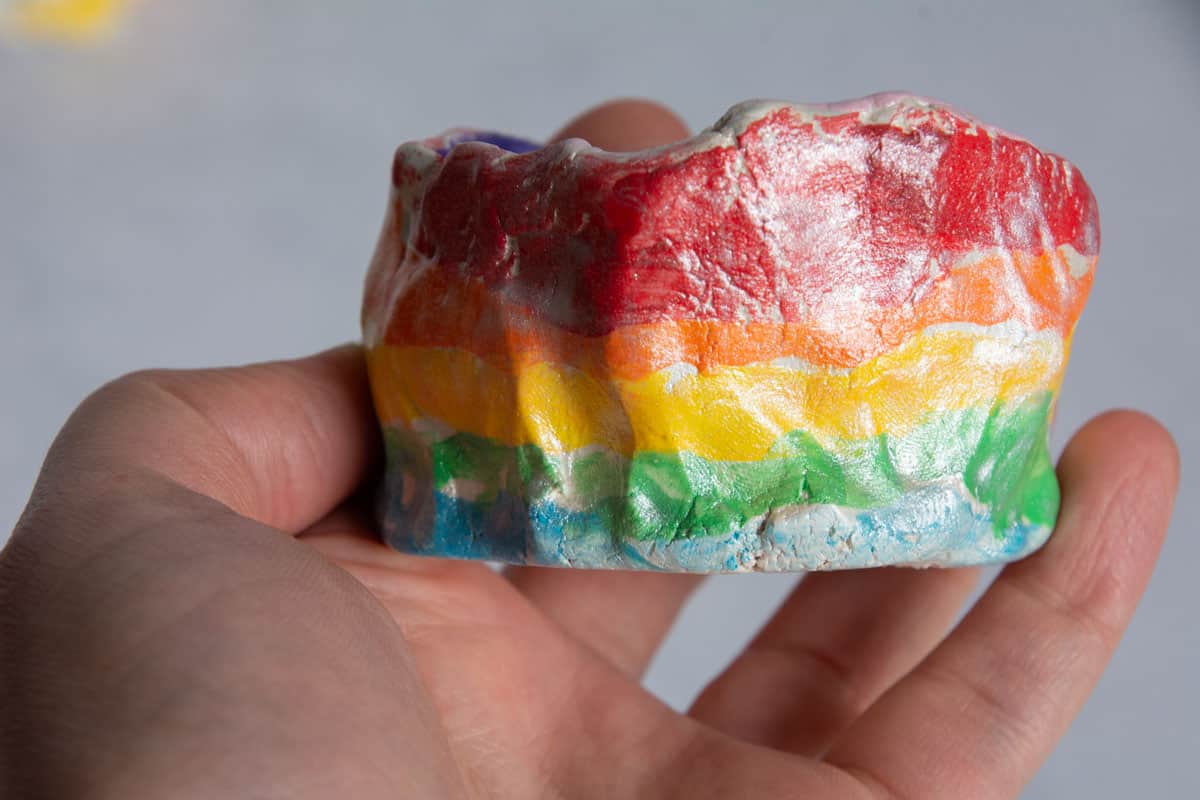
Disclosure: We only recommend products we would use ourselves and all opinions expressed are our own. This post may contain affiliate links when clicked, we may earn a small commission at no additional cost to you. Read our full privacy policy.
We recently just finished making air dry clay pinch pots at home. There are so many different pinch pot projects we plan to try next, so coming up with the best way to paint them was a must.
What is air dry clay?
Air dry clay is the perfect sculpting material for beginners due to how it hardens. Air-drying clay can be molded and shaped like traditional clay but will harden when exposed to air instead of needing to be fired in a kiln.
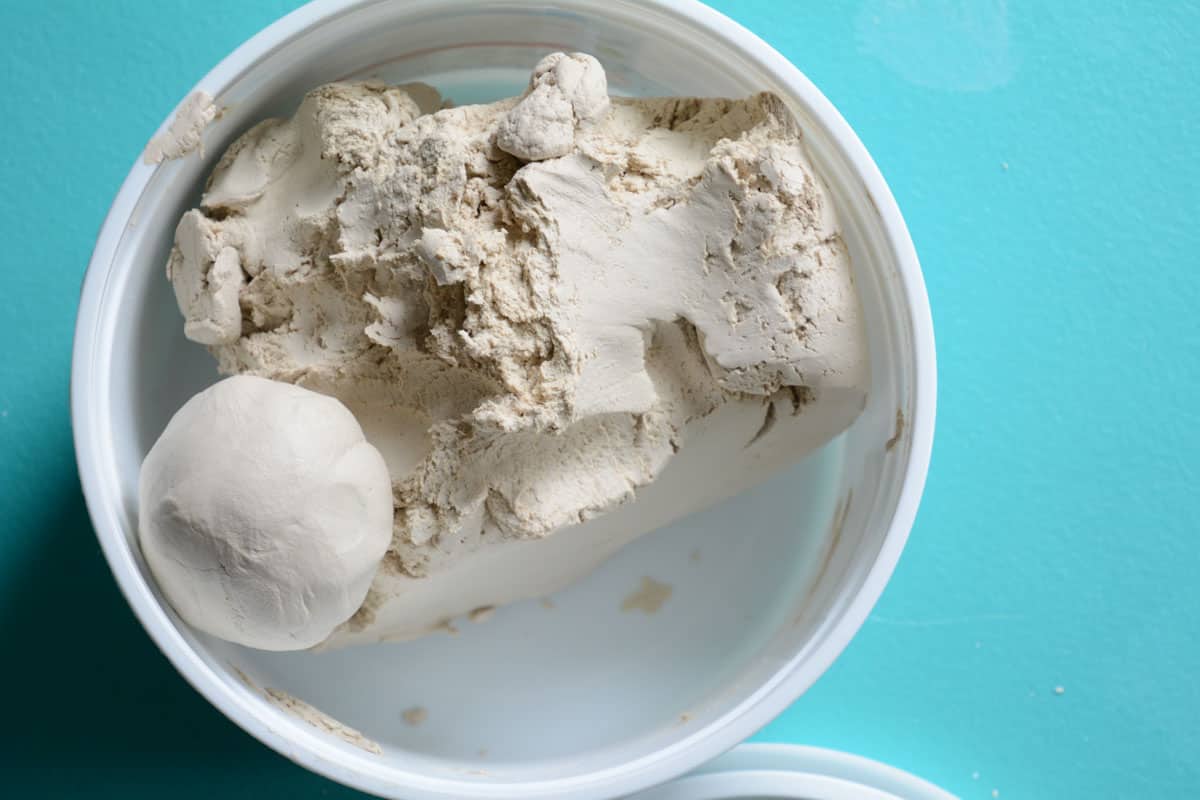
2 Options To Add Color
The most basic way to add color to clay is to paint it once it has dried. However, you can also “dye” the air dry clay by adding paint to it while it is wet.
Types Of Paint
- Acrylic Paint
- Watercolor Paint
- Gouache Paints
- Tempera Paint
- Spray Paint
- Chalk Paint
- Oil Paints (with caution)
- Natural Materials
Pros And Cons
Acrylic Paints
- Pros: Great color selections, vibrant colors, fast drying, good adhesion, easy clean-up, relatively inexpensive for craft paints
- Cons: Can stain clothes, can be applied thickly, some colors may require extra layers of paint, can be expensive for professional acrylic paints
Watercolor/Gouache Paints
- Pros: Ability to get different painterly effects, transparent, can blend easily, super easy clean-up
- Cons: You have to be careful not to overwet the clay, may not cover well
Tempera Paints
- Pros: Kid-friendly, variety of colors, very quick drying
- Cons: May chip off projects, can be less durable
Spray Paints
- Pros: Quick application, wide color selections and effects
- Cons: Need ventilation, not meant for intricate details, not kid-friendly
Chalk Paints
- Pros: Adheres well to porous surfaces, fun matte appearance
- Cons: Can be expensive, might need a top coat for full protection
Natural Materials
- Pros: Inexpensive
- Cons: limited color palette
Best Paint To Use With Kids
Your best option is any water-based paint, but we actually avoid tempera on any 3-d projects. Yes, the pros of it being washable, non-toxic are great, but we have seen several art projects where the paint just chips off.

When appropriately monitored even young children can use acrylics. If choosing to watercolors on air dry clay with kids we would give them a small brush to avoid overwetting the clay.
How To Paint Air Dry Clay (kid edition)
While you are seeing a kid-friendly clay project, the same basic rules would apply to more advanced self-hardening clay creations.
Step 1: Dust Of Project
For best results, make sure your clay sculpture is completely clean. You do not want extra dust, fuzz, etc., getting stuck in your paints.
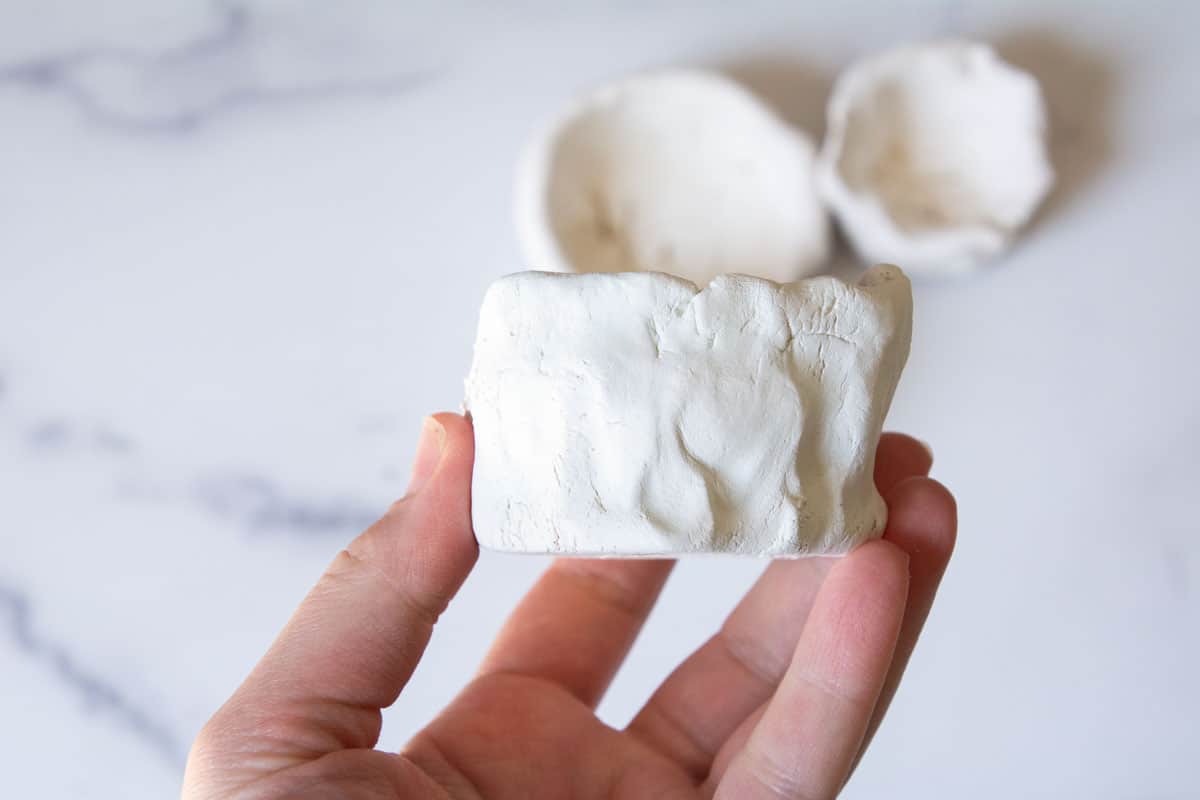
Step 2: Paint In Thin Layers
Let each layer completely dry before painting on top. Make sure to not have too much water mixed in with your acrylic colors.
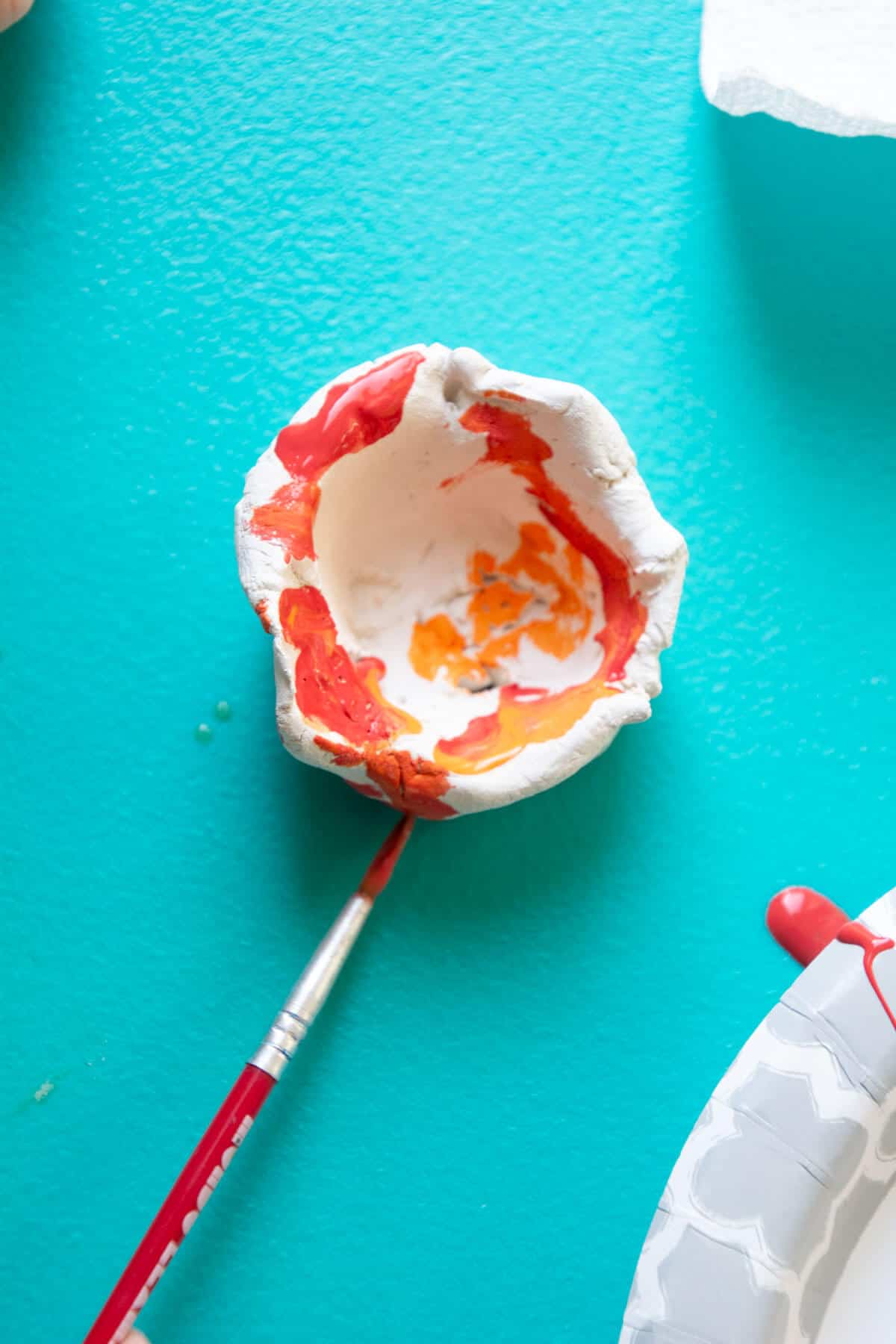
This young child was happy with the design she painted. She could have painted another layer to get rid of the white air-dry clay showing.

Step 3: Add A Clear Coat or Arcylic Sealer
There are a lot of different clear sealers for clay that can be applied to a regular or air dry clay item.

One of our favorite ways to give a kid’s art project a little pop is to use an iridescent medium. It adds just enough shimmer while also adding a little extra protection.
Other Sealers To Consider
- Acrylic Sealers
- Mod Podge: from glossy finish to glitter they have a finish for your clay surface.
- Watered-Based Varnish
- Epoxy Resin
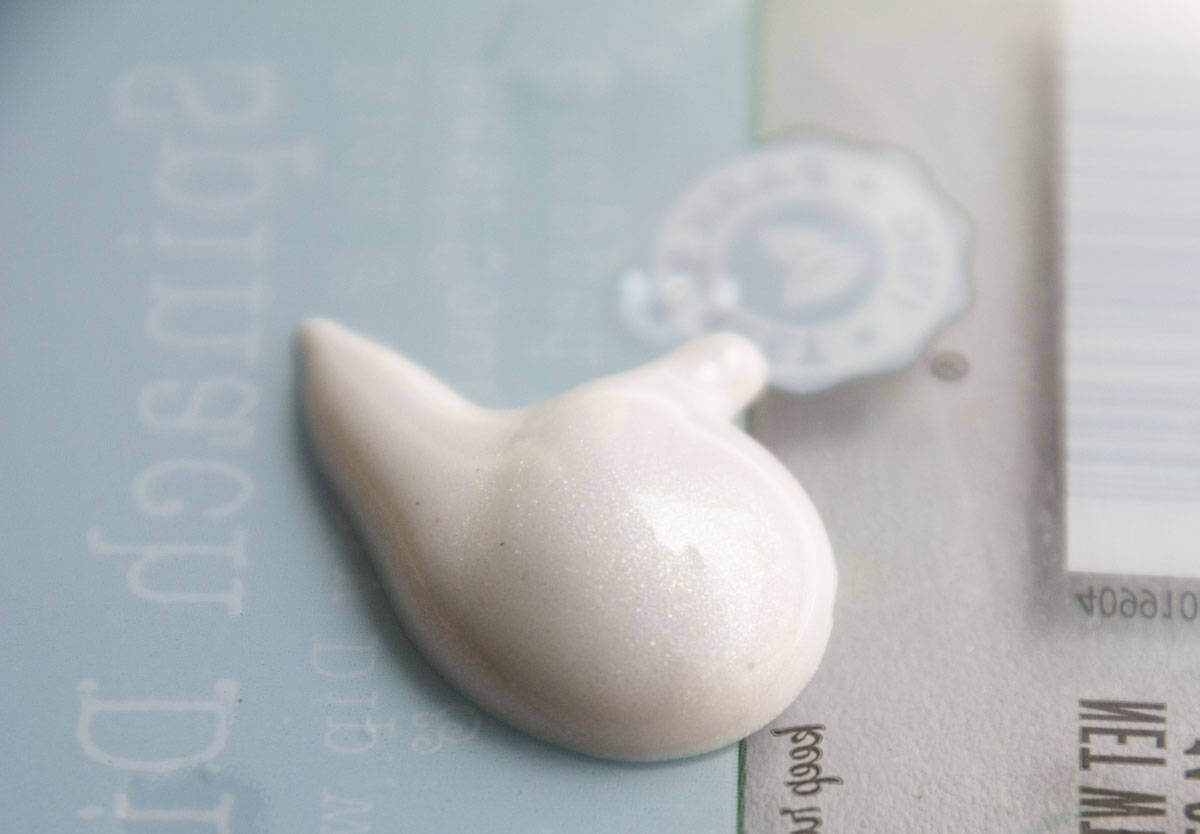
Tips
- Don’t rush the drying process: This may be anywhere from 48-72 hours later. There are many factors that will affect dry time such as project size, the thickness of walls, the brand of air dry clay being used and your environment.
- Flat surfaces will work best when trying to paint intricate details. You can fix any issues with extra fine sandpaper first before painting.
- Embrace the texture of the air dry clay and use your paint to enhance the natural textures already created.
- Apply the paint in thin coats
- Set up your workspace: air dry clay and paint can be a little messy (especially when working with children) so always be cautious.
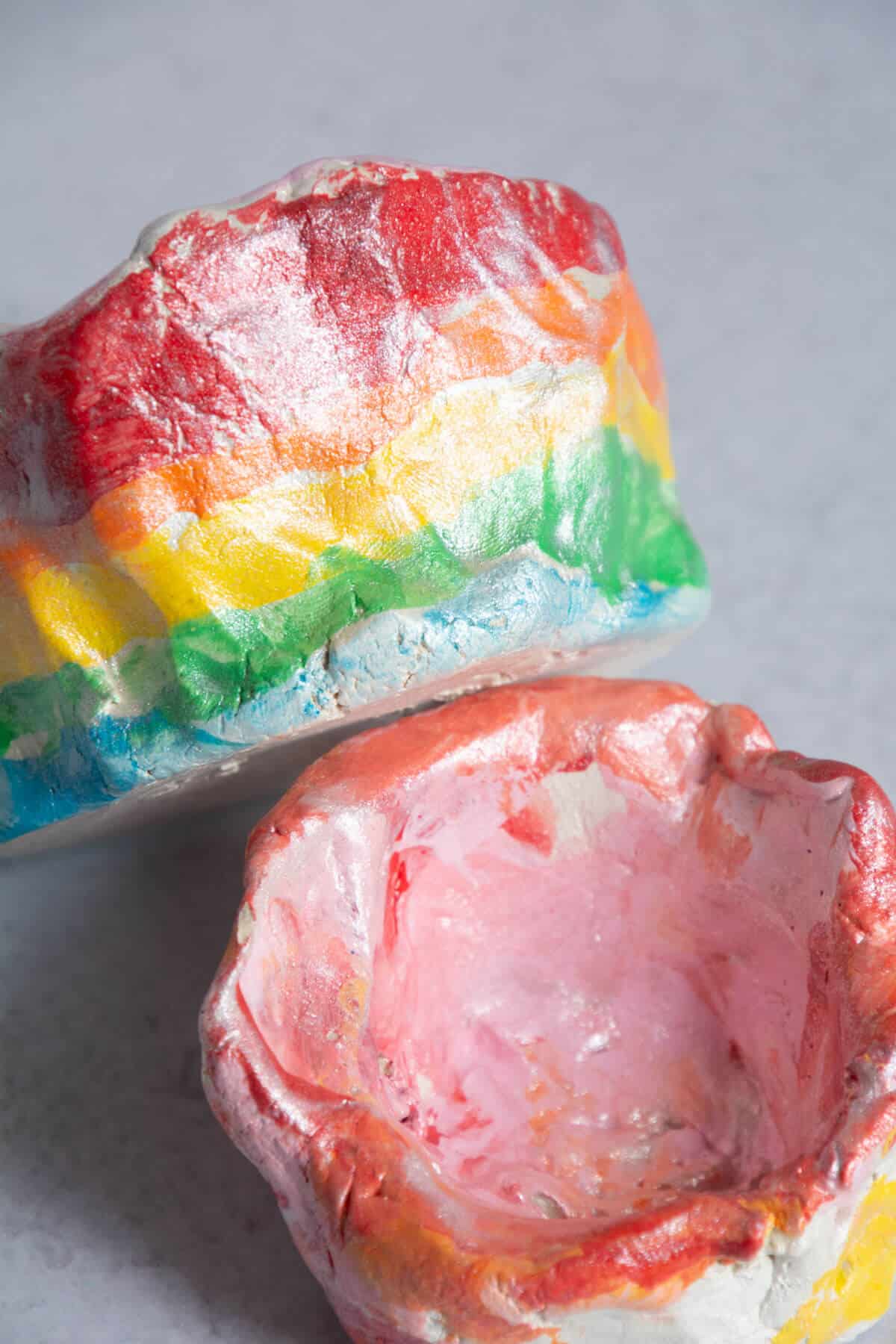
Paint FAQs
The surface of the clay shrinks while drying. If you apply paint before your clay is completely dry, you may run into this problem.
Certain markers and even permanent markers may smear when a varnish is added to air dry clay. You can always experiment first to test your materials before beginning.
If you need to seal several projects a spray acrylic sealer will save you a little time. You can get them in a glossy finish or matte finish.
Follow us on Pinterest, YouTube, Facebook & Flipboard for more free art and craft ideas!
Related Ideas
- 6+ Clay Animal Ideas Kids Love
- Can You Use Oil Pastels On Clay?
- Fun Flower Pinch Pot Art Lesson (great for younger elementary students)
Do you like this art project? Please give us 5 stars below 🤩🤩🤩🤩🤩 and have fun being creative with your family.
How To Paint Air Dry Clay

Equipment
- Paint Brush
Supplies
- Watercolor or Acyrlic Paint Set these are the two easiest paints to use
- Air Dry Clay Project
- Water
- Clear Coat or Varnish
Instructions
- Dust of project before beginning.
- Paint in thin layers.
- Let each layer completely dry before painting on top. Make sure to not have too much water in your brush.
- Once completely dry, add a clear coat to the project.
Notes
- Let your air dry clay dry fully: This may be anywhere from 48-72 hours later. There are many factors that will effect dry time such as: project size, the thickness of walls, the brand of air dry clay being used and your environment.
- Flat surfaces will work best when trying to paint intricate details. You can fix any issues with extra fine sandpaper first before painting.
- Embrace the texture of the air dry clay and use your paint to enhance the natural textures already created.
